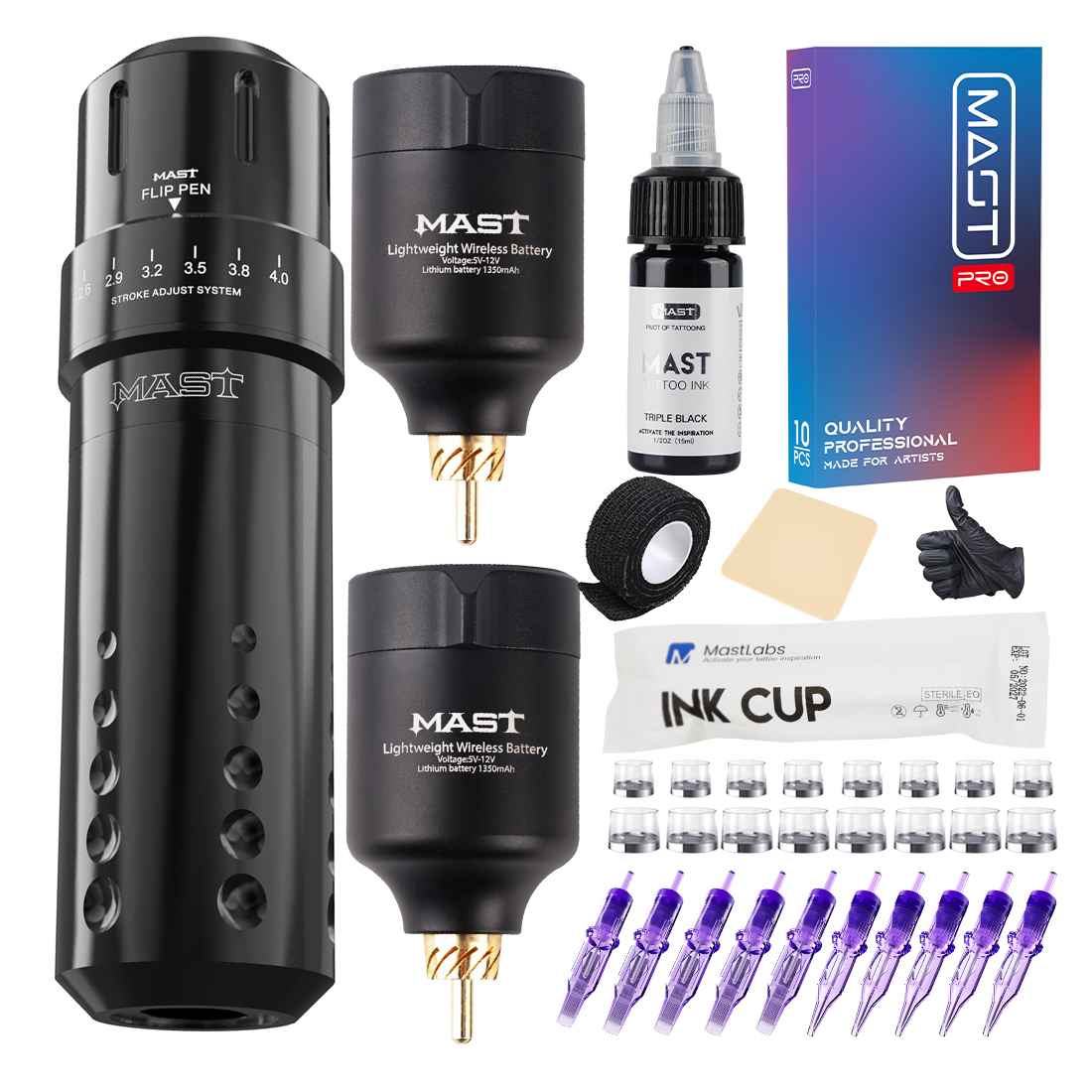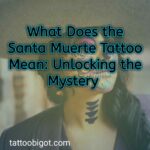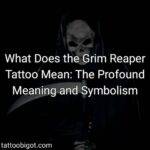The legend of La Llorona, the weeping woman, has been a prominent part of Latin American folklore for centuries. This ghostly woman in white is known for haunting rivers and lakes, weeping as she searches for her drowned children.
A La Llorona tattoo can hold great symbolic importance for those who identify with her story. A movie was even done on it in 2022.
In this article, we’ll explore the La Llorona tattoo meaning, from grief and motherhood to culture and spirituality. We’ll also look at popular designs and optimal tattoo placements.
La Llorona Tattoo Meanings
So what does the La Llorona symbolize?Let’s explore the various meanings attached to the La Llorona tattoo.
1. Grief and Sorrow
One of the most common meanings behind a La Llorona tattoo is grief and sorrow.
According to legend, she is doomed to eternally weep and wail for her lost children. A La Llorona tattoo can therefore represent profound grief or sadness, especially over the loss of a child.
It can be a memorial tattoo for a deceased child or loved one. The act of solemnly carrying this symbolic weeping woman on one’s body can reflect the depth of mourning.
2. Motherhood
La Llorona is intrinsically tied to motherhood. She is the eternal mourning mother, crying out for children she can never find.
Many Latina mothers choose to get La Llorona tattoos to represent that unbreakable maternal bond.
It symbolizes a mother’s unconditional, even self-sacrificing love for her children. For some, it is a tribute to the trials of motherhood and strength it requires.
The duality of La Llorona as both loving mother and vengeful spirit reflects the complexity of the motherhood experience.
3. Warning or Omen
In legend, the sound of La Llorona’s wails warn that she is near and that danger is close, especially for wandering children.
A La Llorona tattoo can similarly act as a reminder to protect children from harm. It can serve as an omen, a harbinger of potential danger.
Or it can act as a symbolic warning against certain actions or behaviors. For example, some may interpret it as a sign to avoid infidelity, jealousy and violence.
4. Femininity
La Llorona is an iconic Latina figure. As such, her tattoos often represent feminine Latina identity and cultural roots.
She symbolizes some of the dualities of womanhood – gentle and violent, victim and monster, innocent and murderous.
For many Latina women, La Llorona tattoos celebrate the complexity of femininity as well as feminine power and mystery. They represent reclaiming and connecting with their cultural mythology.
5. Death
Since La Llorona is a ghostly, supernatural weeping spirit, her tattoos naturally also signify death and grieving those who have passed on.
They can represent mourning a loss, missing the dead, or interacting with spirits and the afterlife.
As a folklore figure, she bridges the divide between the living world and underworld.
For some, a La Llorona tattoo signifies fear and fascination with death itself. It inspires contemplation of the great unknown.
6. Cultural Significance
As a major legend in Mexican and Southwestern American folklore, La Llorona strongly represents cultural roots. Her story spans generations and regions.
For many Latino men and women, wearing her image in tattoo form expresses pride in their cultural heritage.
It connects them to Latino legends and traditions. Even non-Latinos may choose La Llorona tattoos because they appreciate her story and mysticism.
7. Spirituality and Mysticism
To some, La Llorona represents a spiritual figure or mystical omen from beyond our world.
She seemingly inhabits two realms – earthly and spirit. A tattoo can reflect belief in her supernatural powers.
It may indicate spiritual interests like mysticism, witchcraft, and communing with ancestral spirits or ghosts.
The tattoo could even ward off evil spirits. La Llorona’s mystical qualities make her tattoo especially intriguing.
Also Read: What does a Lamb Tattoo Mean and Amazing Lamb Tattoo Ideas.
Common La Llorona Tattoo Designs
So far, I’ve talked about La Llorona tattoo meanings. It’s important to note that there are several iconic designs associated with La Llorona tattoos.
Here are some of the most popular choices:
Crying Woman
The most literal design is a crying woman, especially one with Hispanic features. Sometimes she emerges eerily from water.
Details like tears streaming down her face emphasize her weeping and pain.
Adding children around her strengthens the maternal symbolism. Black and grey ink or a white dress evoke her ghostly nature.
Also: What Does the Santa Muerte Tattoo Mean: Unveiling the Mystery
Ghostly Figure
Similar to the crying woman, she may be depicted as a full ghostly figure in white garb.
This slender, haunting phantom can appear floating above water or trees for added mysticism.
Glowing eyes and veiled faces give her an otherworldly vibe. Adding moon, mist, or flower elements enhances the supernatural look.
Children
Incorporating children is another way to represent La Llorona’s mourning for her sons and daughters.
Their small handprints on her dress or souls floating away reference her lost children.
Depicting them playing or under water may symbolize their drowning. Children show the maternal side of this legend.
Water
Since La Llorona wanders near rivers and lakes in her eternal sorrow, water elements are very fitting in her tattoos.
River waves, splashes, ripples, and drops represent drowning and weeping.
Water reflects surfaces also give an illusion of her ghostly presence. Lotus flowers emerging from water add mysticism.
Moon
The moon enhances her nocturnal, haunting essence as she roams at night.
Crescent, full, and new moon phases may signify cycles, transitions, and her immortality.
A moon and water combination illustrates when her spirit appears near bodies of water under the moonlight.
Flowers
Flower choices like lilies, marigolds, and roses evoke death and sorrow. Their symbolism in Latino culture resonates with La Llorona’s grief.
Willow trees and vines can frame the image with mystical, floating foliage. Wreaths reference mourning and loss.
Placement Ideas for a La Llorona Tattoo
La Llorona tattoos work well in these common placements:
1. Arm
Long, slender arms mirror La Llorona’s haunting figure. A weeping woman or ghostly spirit design on the upper or lower arm makes a graceful statement.
The forearm also allows room for creative background elements like water and moon phases.
2. Back
A full back tattoo has ample space for an arresting La Llorona scene. Her wavering spirit emerging from dark waters or trees has a dramatic impact here.
Surrounding symbols like children and flowers can be incorporated to expand the imagery.
3. Leg
Legs move well with La Llorona’s fluid, floating essence. The thigh, calf, or full leg are ideal for long ghostly gowns, detailed children portraits, and dynamic water scenes. Leg tattoos also complement her wandering, unsettled spirit.
4. Chest
Over the heart, a La Llorona piece signifies deep love and loss. This emotive placement reflects the profound grief and maternal themes of her legend. Either subtle cameos or larger designs work beautifully.
Conclusion
In this article, we’ve looked at the most popular La Llorona tattoo meanings, and as a legendary Latina figure, La Llorona embodies cultural sorrow and complex femininity.
Her weeping spirit lives on through gorgeous tattoos conveying grief, motherhood, mysticism, warnings, death, and Latino pride.
Tattoo artists skillfully capture her chilling, graceful spirit in designs from crying women to ghostly figures surrounded by moons and flowers.
She drifts elegantly onto arms, backs, legs, and chests. For those drawn to her magic and myth, a La Llorona tattoo beautifully immortalizes this eternal weeping mother.
FAQs
What does the name La Llorona mean?
The name La Llorona literally translates to “the weeping woman” in Spanish. It refers to the legendary ghostly figure who mourns the deaths of her children.
What is the original legend of La Llorona?
The origins vary, but the most common version is that La Llorona was a beautiful peasant woman named Maria who fell in love with an upper-class man.
They had children together secretly. When he refused to marry her, in a fit of rage she drowned their children in a river. Upon realizing what she’d done, she killed herself with grief.
Her spirit was unable to pass on and began haunting waterways, weeping for her dead children.
What are some other symbolic meanings of a La Llorona tattoo?
In addition to the major meanings, La Llorona tattoos sometimes represent unrest, vengeance, penance, destructive love or passion, feminism, and symbols of life after death.
What are good font styles for a La Llorona tattoo?
Flowing script or cursive fonts complement La Llorona’s gracefulness. Elegant fonts like Great Vibes, Reem Kufi, and Dancing Script evoke her swirling spirit. For a creepier vibe, jagged fonts like Materiella Fraktur and Lycanthrope work well.
What other Mexican/Latino folklore tattoos are popular?
Some other cultural tattoos include images related to Dia de Los Muertos, Aztec/Mayan gods, the Chupacabra creature, and figures like Juan Soldado, La Malinche, and El Cucuy. Catholic figures like Our Lady of Guadalupe and Santa Muerte are also common in Latino tattoos.






